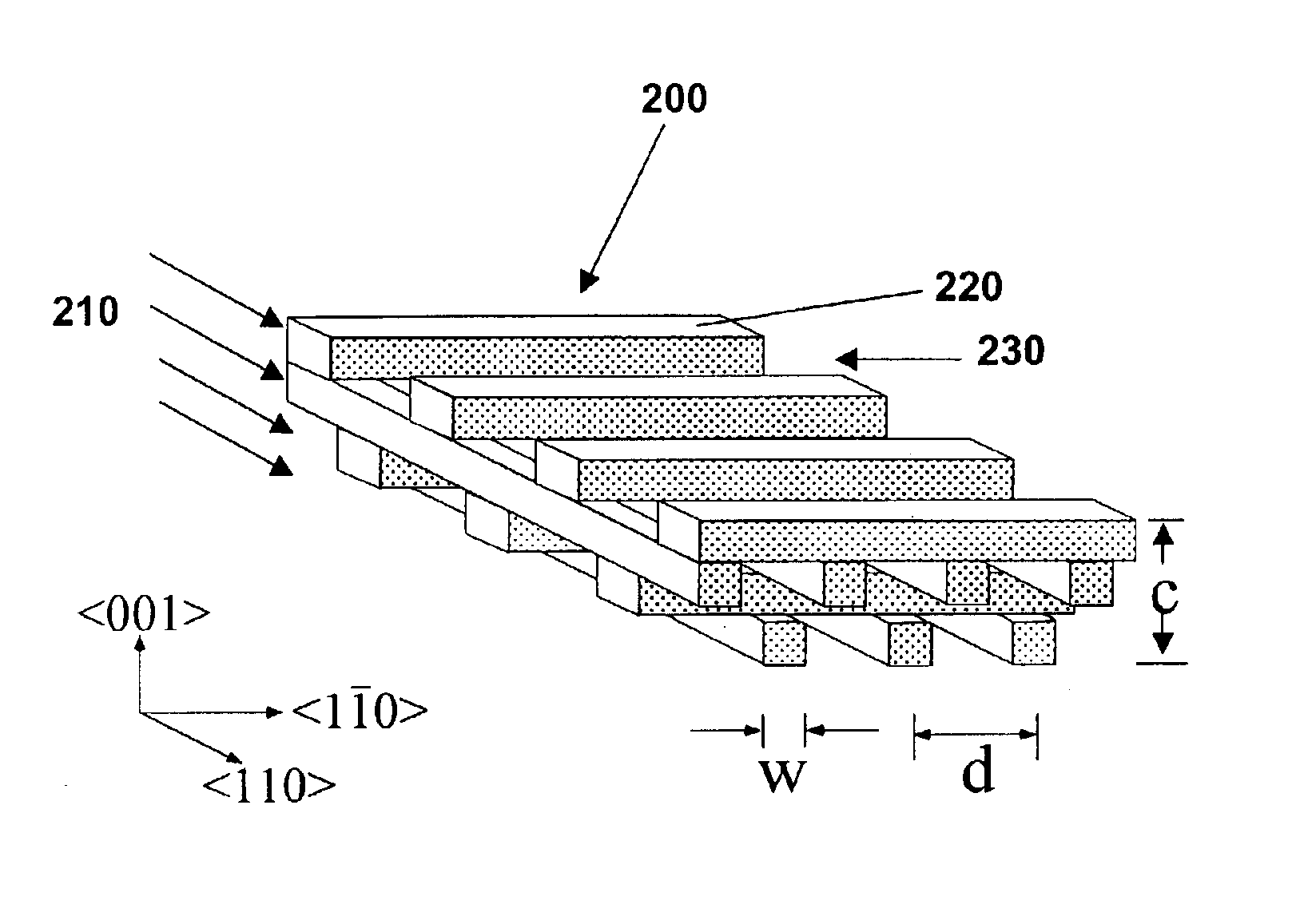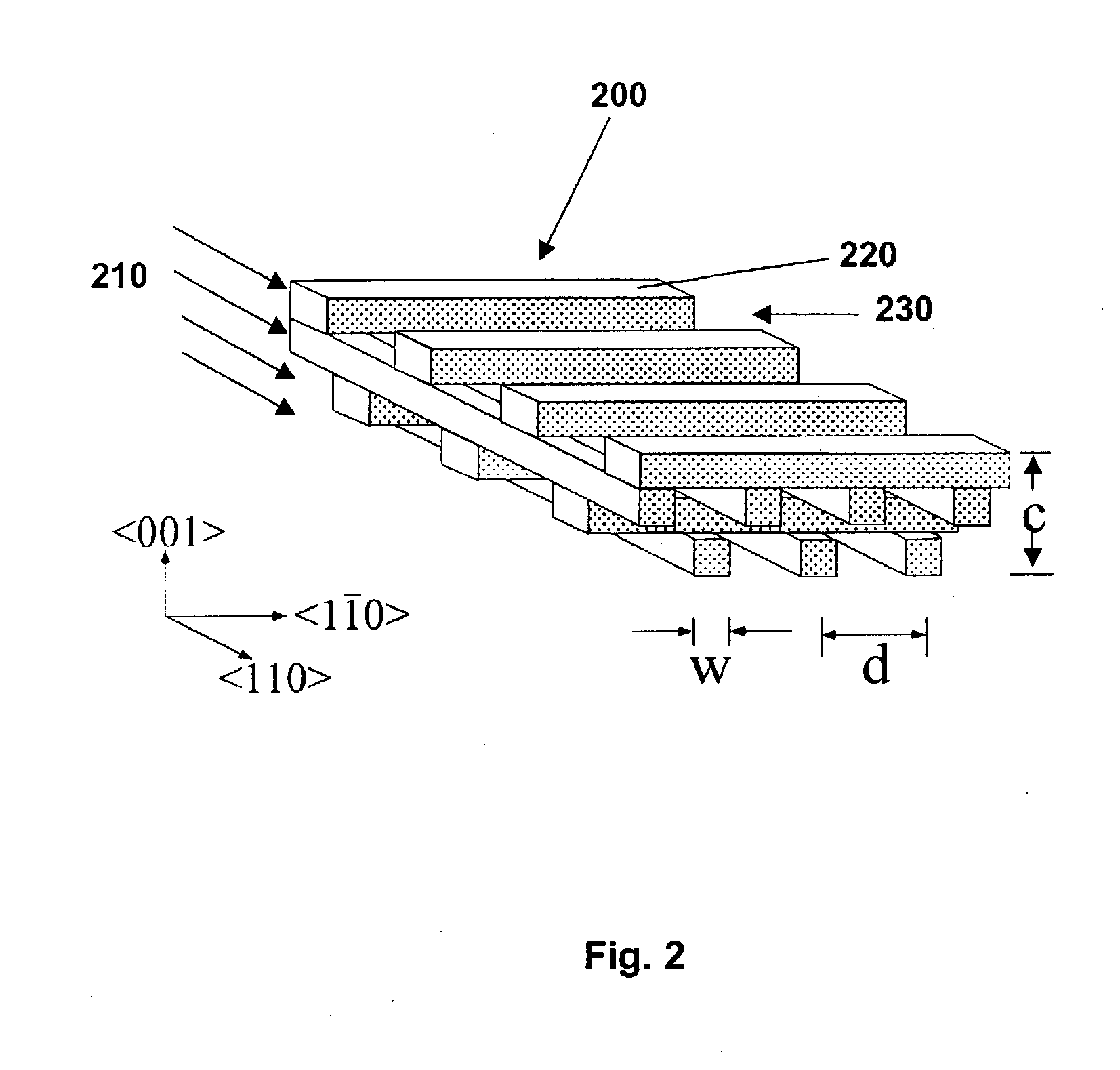Method for fabricating a photonic crystal
a technology of photonic crystals and manufacturing methods, applied in the manufacture of electrode systems, cold cathode manufacturing, electric discharge tubes/lamps, etc., can solve the problems of inherently less efficiency in converting input electrical power, the least efficient (energy to useful light) lighting technology used commercially today, and the least efficient (energy-to-use light) lighting technology used today
- Summary
- Abstract
- Description
- Claims
- Application Information
AI Technical Summary
Benefits of technology
Problems solved by technology
Method used
Image
Examples
Embodiment Construction
otonic crystal prior to removal of a silica sacrificial mold. FIG. 4b shows the tungsten photonic crystal after removal of the silica sacrificial mold. The one-dimensional tungsten rod used to form the crystal has a rod width of 1.2 μm and the rod-to-rod spacing of 4.2 μm.
[0018]FIG. 5 shows the measured reflectance and transmittance spectra for the light propagating along the axis of the four-layer tungsten photonic crystal.
[0019]FIG. 6 shows the tilt-angle reflectance spectra from the four-layer tungsten photonic crystal.
[0020]FIG. 7 shows the computed transmission spectra for tungsten photonic crystals with N=2, 4 and 6 layers.
[0021]FIG. 8 shows the spectral emissivity of the four-layer tungsten photonic crystal having a lattice constant of 4.2 μm.
DETAILED DESCRIPTION OF THE INVENTION
[0022]The present invention comprises a photonically engineered incandescent emitter that is more efficient than conventional incandescent lamps and a method for making the same. The more efficient i...
PUM
 Login to View More
Login to View More Abstract
Description
Claims
Application Information
 Login to View More
Login to View More - R&D
- Intellectual Property
- Life Sciences
- Materials
- Tech Scout
- Unparalleled Data Quality
- Higher Quality Content
- 60% Fewer Hallucinations
Browse by: Latest US Patents, China's latest patents, Technical Efficacy Thesaurus, Application Domain, Technology Topic, Popular Technical Reports.
© 2025 PatSnap. All rights reserved.Legal|Privacy policy|Modern Slavery Act Transparency Statement|Sitemap|About US| Contact US: help@patsnap.com



